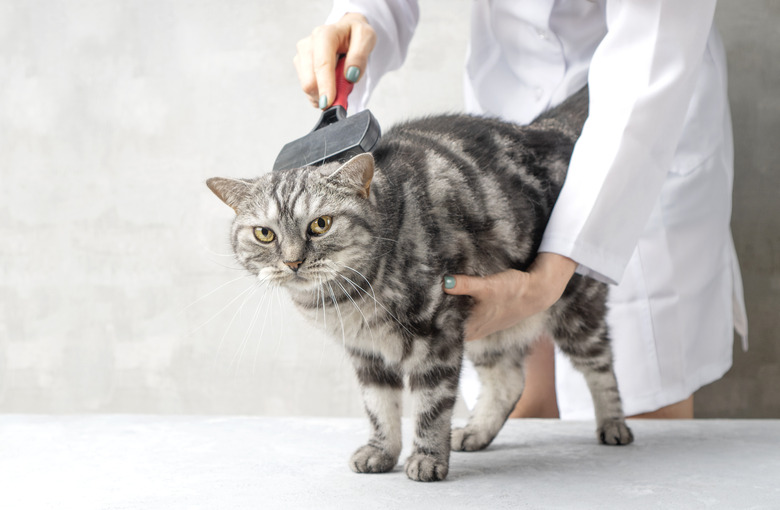How To Get Rid Of Large Mats In Cat Fur
Mats in cat fur are a tricky situation to deal with for a pet owner, as most cats prefer to groom themselves and won't always sit still for a knotted sticky patch to be removed. But if mats in cat hair remain in place, they can worsen and even cause infection to set in, putting your pet's health in danger. At-home daily brushing for matted cat hair removal is ideal, but if the matting you notice is too difficult for you to take out, get help from your pet's vet. In some cases, a professional groomer may need to step in and help free up these pesky tangles.
Why mats in cat hair develop
Why mats in cat hair develop
Any cat can develop matting in the coat, but long-haired cats are more susceptible to this condition. Mats in cat hair occur when the fur becomes knotted and tangled, sometimes because your cat sheds her undercoat, and it gets entwined in the top coat. When a feline's coat gets overly dirty or oily, matting can also develop. And fur that's in spots that are subject to lots of movement (between the legs, around the neck, under the chest) can twist, allowing matting to set in. Left alone, mats can grow bigger and pull tighter, causing animals pain and discomfort.
The danger of mats in cat fur
The danger of mats in cat fur
The worst matting cases can end up with a pet needing surgery and even amputation, but this isn't often the case. Still, the dangers of mats in cat fur are very real and may include irritation and lesions on the skin, and a lesion or open wound can become infected if untreated.
Infestation is also a serious complication due to fur matting in animals, as fleas, ticks, and maggots can dive deep into tangled fur, making them hard to spot by pet owners. And if mats in cat fur develop around the anus, voiding can become problematic. Feces may join up with the mats, making defecation very difficult.
How to remove matted cat hair
How to remove matted cat hair
Luckily, cats are naturally programmed to self-groom their fur. You've no doubt noticed how fastidious your kitty is when it comes to licking his coat and cleaning himself. The genius of cat grooming actually lies in the feline tongue, which is covered in tiny bristles that are top notch at removing dirt and excess hair. And cats are very flexible, so they're able to twist and turn their body to reach nearly every piece of fur and clean it thoroughly.
When a cat can't groom himself well, either because he's aged and can't bend and reach as easily as before or because there's just too much fur to clean, a pet owner needs to step in. The best way to combat cat fur matting is to engage in daily brushing or combing of his coat. Teaching your cat to remain still and calm during this process is a challenge, but with time and patience (and some tasty treats), your pet should become accustomed to the feel of the brush on his fur. If you feel a mat on the fur, try to gently comb through it or use a mat breaker, which is a tool that can sometimes free up a small mat that's not very tightly bound.
When to seek help
When to seek help
If matted cat hair removal is too difficult for you to tackle, it's a good idea to call in a pro groomer. You can also get help (and grooming tips) if your cat won't sit for brushing or if she fights you during the process. Whatever you do, don't be tempted to take a pair of scissors and try to cut out a big mat. Your animal may flinch when you approach, and she could be hurt by this sharp implement.
